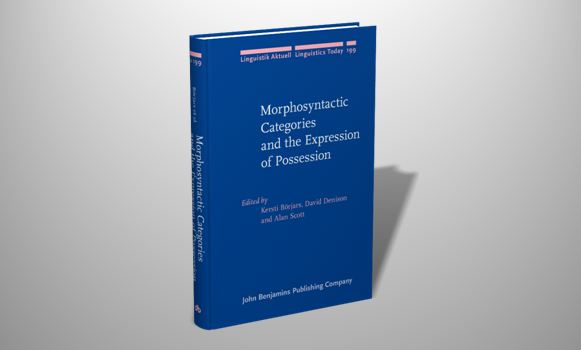
14/03/2013, by CLAS
Possession marking: ’s and beyond
One of the most widely studied elements of the Germanic languages is the ’s which attaches to a noun phrase to indicate possession in English. The analysis of this element, the possessive ’s, has been the object of much debate in linguistics on account of its unusual behaviour, which makes its categorisation problematic. It can attach not just to the possessor noun itself, as in John’s book, but potentially also to the right edge of a longer possessor noun phrase, and not necessarily to the possessor noun itself, as in the man in the car’s hands (i.e. the hands belong to the man, not to the car). However, despite being able to produce phrases like the man in the car’s hands, usage data show that speakers tend to avoid them, preferring to attach the possessive ’s to the possessor noun. Faced with a situation in which this is impossible, either they avoid possessive ’s altogether in favour of the preposition of (the hands of the man in the car), or they produce a formation with the structure the man’s hands in the car (which looks unlikely when written down but turns out to be roughly as frequent as the familiar structure the man in the car’s hands).
The special characteristics of the English possessive ’s are the topic of several of the chapters in a new book, Morphosyntactic Categories and the Expression of Possession, co-edited by the German department’s Dr Alan Scott along with Manchester colleagues Professor Kersti Börjars and Professor David Denison, and recently published by John Benjamins as volume 199 of the Linguistik Aktuell series.
Besides the chapters dealing with English possessive -s both in the modern language and in earlier periods, the book contains analyses of phrases expressing possession in several other languages. Two superficially similar West Flemish possessive constructions – Valère zenen oto and Valère zen oto ‘Valère’s car’ [literally ‘Valère his car’] – are found to differ inasmuch as the former can be used with singular or plural possessor nouns, while the latter only occurs with singular possessor nouns. Other chapters focus on the marking of possession in Swedish and in Urdu.
With contributions from prominent scholars from around the world, and highlighting various theoretical backgrounds and methodological approaches, Morphosyntactic Categories and the Expression of Possession illustrates the lively debate that surrounds the analysis of possession marking constructions.
The book is one of the outputs of the Arts and Humanities Research Council-funded project Germanic Possessive -s: An Empirical, Historical and Theoretical Study (at the University of Manchester). More details about possession marking, as well as a database of possessive constructions in spoken English and Swedish, can be found at the project’s website.
No comments yet, fill out a comment to be the first

Leave a Reply